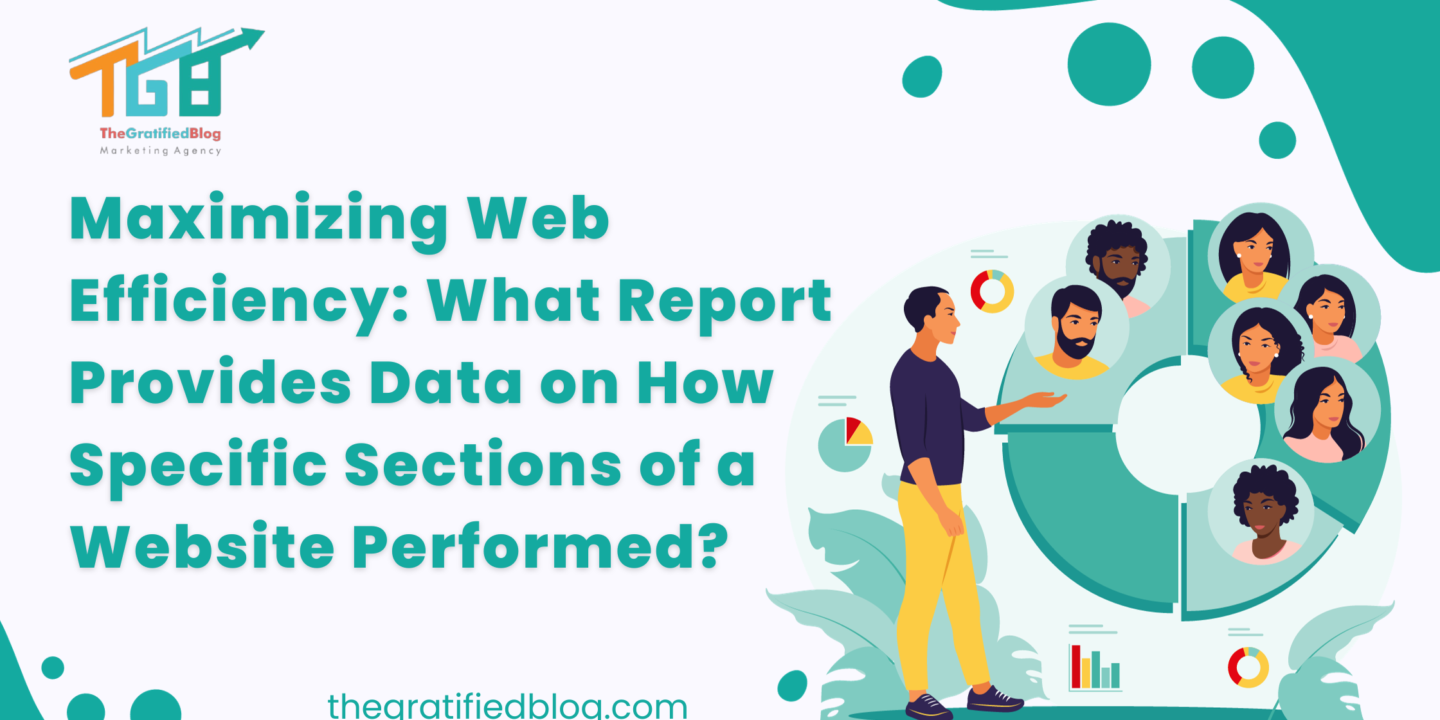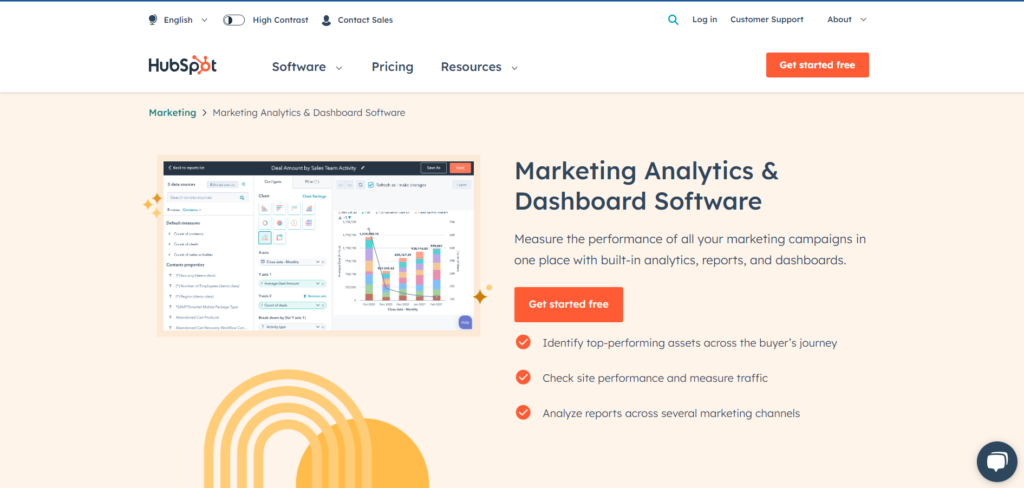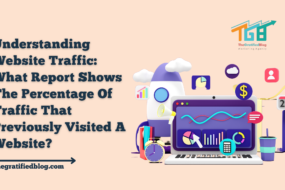
Do you need help determining what report provides data on how specific website sections performed? It’s a common issue for web admins and businesses with an online presence.
Your website runs like a well-oiled machine, but even the best-tuned engines occasionally experience problems. That’s where the report provides data on how specific website sections performed come to your rescue, serving as your trusty diagnostics tool to identify and fix issues.
Imagine having the power to dissect your website’s performance precisely, zooming in on specific sections to uncover the hidden culprits behind low traffic, high bounce rates, or lackluster conversions.
This article will explore what report provides data on how specific website sections perform. You’ll also discover the tools and metrics essential for effectively gathering this data.
What Report Provides Data On How Specific Sections Of A Website Performed?
What report provides data on how specific sections of a website performed? A website performance report thoroughly examines a website’s efficiency in terms of user experience, traffic, and conversions. It provides data on various subjects, including website load times, conversion rates, user behavior, and traffic sources.
These reports help businesses identify strengths and areas in specific sections for improvement to enhance online performance. And there are three important ones every business must know.
Section-Specific Reports
Section-specific reports concentrate on specific areas of your website, such as service offerings or product categories. You can focus on particular reports to get a detailed view of how each component works by zooming in on the performance of various elements. This level of knowledge is essential for customizing your strategy to the specific needs of each component.
By using section-specific reports, you can identify which areas of your SaaS website are excelling and which might require more attention. For example, if you have numerous product categories, these data might highlight which ones generate the most conversions and traffic. With this knowledge, you can wisely spend your resources, investing more in the areas with the highest growth potential.
Landing Page Performance Reports
Landing page performance reports are all about assessing the effectiveness of your entry points. These reports show how well your landing pages capture and convert visitors. You’ll learn which landing pages drive the most conversions and which may need optimization.
Additionally, landing page performance reports reveal critical metrics like bounce rates and time on page, which offer insights into user engagement. High bounce rates indicate that a landing page needs improvement, while a longer time on the page suggests a more engaged audience.
Product Or Service Page Reports
Product or service page reports are tailored specifically to these critical sections of your website. They provide data on your offerings’ performance, including metrics like views, clicks, and conversions. Through these reports, you can pinpoint which products or services are most popular and which may need marketing or optimization efforts.
Furthermore, these reports offer insights into user behavior on these pages. For example, you can see how far users scroll down a product page and whether they tend to drop off before making a purchase. This information guides you in refining the content and design of your product or service pages for better results.
Other Website Performance Reports That Are Not Section-Based
These reports focus on something other than pages but your website as a whole.
Traffic Reports
When we talk about traffic reports, you get the inside scoop on how well your SaaS website is doing. You can see who’s checking out your content and where they’re rolling in from. Plus, you’ll snag some essential info about your target crowd, like where they’re at, what tech they’re into, and their age and gender.
Armed with all this data, you can tweak your website’s content and marketing game to match what your audience wants. Once you’ve got a handle on your peeps, you can whip up content that hits home with them and zero in on the platforms where they hang out the most.
Furthermore, traffic reports provide a crucial breakdown of your traffic sources. You’ll know if most visitors find you through organic search, social media, paid ads, or referrals. This knowledge is invaluable for effectively allocating your resources. For example, if you observe that organic search is a primary traffic source, you should invest more in SEO to maintain or improve your search engine rankings. Conversely, if social media drives significant traffic, you can create engaging content to sustain and expand that audience.
Conversion Reports
Conversion reports are your go-to resource to gauge how effectively your website persuades users to take desired actions, such as signing up for your SaaS product or purchasing.
They shed light on your call-to-actions (CTAs) and landing pages, revealing what works and what could be improved. When you delve into your conversion data, you’ll discover which CTAs are performing exceptionally well and which might benefit from enhancements. By optimizing these elements, you can significantly boost your conversion rates.
Furthermore, these reports reveal critical insights into where visitors drop off in your conversion funnel. This means you’ll pinpoint precisely where potential customers lose interest or encounter roadblocks.
Armed with this information, you can make changes to the layout and content of your website to enhance the user journey. It’s all about creating a seamless path that guides visitors toward completing your desired actions. Conversion reports are your compass for optimizing your website’s performance and increasing its effectiveness in achieving your business goals.
User Behavior Reports
User behavior reports provide essential insight into how users engage with your SaaS website. They show you which pages people visit, how long they spend on each page, and the paths they travel through your site. By looking into these data, you can thoroughly understand your audience’s behavior. This knowledge allows you to optimize the structure and content of your website for a more seamless and engaging user experience.
Moreover, user behavior reports often include features like heatmaps and click tracking. These visual tools reveal where users click on your pages and how far they scroll. By analyzing this data, you can determine which components tickle consumers’ interest and which areas may require improvement. This visual feedback allows you to fine-tune your website’s layout and content placement for optimum effect.
Key Metrics To Track For Each Performance Report
Several metrics must be considered to understand what report provides data on how specific website sections perform. There are particular ones you need to pay attention to.
Traffic Volume
When you consider traffic volume, you’re considering all the people who have visited your website. This number gives you a decent sense of the audience size for your material. A significant level of traffic may indicate that your website is getting attention, but quality is just as important as quantity.
Examine your traffic sources to ensure they correspond to your target audience and marketing activities. By tracking traffic volume over time, you can spot trends, seasonality, and the impact of marketing activities, allowing you to make more informed resource allocation decisions.
Bounce Rate
Your website’s bounce rate indicates. The percentage of visitors who leave your site after viewing just one page, known as the bounce rate, can show potential issues with your content or user experience. Analyzing this metric for specific pages or sections of your site is essential to pinpoint trouble areas. A high bounce rate could result from irrelevant content, slow loading times, or more precise navigation. Addressing these issues can reduce bounce rates and encourage visitors to explore further, ultimately increasing engagement and conversions.
Conversion Rate
The conversion rate represents the percentage of site visitors who fulfill a desired activity, such as purchasing or signing up for a trial. A higher conversion rate indicates your website persuades visitors to become customers or leads. Optimize your call-to-actions, landing pages, and checkout procedures to increase conversion rates. Track this measure for different portions of your site to see where you’re succeeding and where you need to improve.
Time On Page
Time on the page indicates how long visitors spend on a specific page. It’s a valuable metric for assessing the engagement level of your content. Analyze time on the page to understand which site sections captivate your audience the most. Longer times suggest that your content resonates and provides value. For sections with shorter times, consider enhancing the content or layout to increase engagement.
Click-Through Rate (CTR)
CTR gauges the percentage of individuals who click on a particular link or element, like a product link or a call-to-action button. This metric plays a vital role in assessing the efficiency of your CTAs and links. A higher CTR indicates that your content and design are compelling users to take action. To boost CTR, experiment with different wording, colors, and placements for your CTAs, especially in critical sections of your site.
Instruments Available For Gauging The Performance Of Your Website Performance
You need a tool once you know what report provides data on how specific website sections perform. Here are some of the more commonly used ones:
Google Analytics
Google Analytics serves as a critical tool for monitoring and assessing website performance. You may analyze user behavior, measure conversions, and receive crucial insights about your target audience. It provides a thorough overview of the user demographics, traffic sources, and effectiveness of your marketing efforts on your website. Adjust your content and marketing tactics using Google Analytics to suit the tastes and habits of your target market better.

HubSpot Analytics
HubSpot offers a robust analytics platform tailored for inbound marketing. It tracks website traffic, lead generation, and customer interactions. HubSpot Analytics also provides valuable data on your email marketing and social media efforts. This tool enables you to measure the ROI of your marketing activities, helping you refine your strategies for maximum impact.

SEMrush
SEMrush is a versatile SEO tool that goes beyond keyword research. It offers traffic analysis and website audit features. SEMrush also provides insights into your website’s performance and suggests improvements to boost your SEO rankings. By leveraging SEMrush, you can identify keywords that increase website traffic and monitor your online presence—progress in search engine rankings.

HotJar
Hotjar is fantastic for understanding user behavior. It offers heatmaps, session recordings, and surveys that enable you to observe how users engage with your website. Analyzing user behavior in specific site sections will allow you to identify pain points and make data-driven optimizations to enhance the user experience.
Conclusion
As we have discussed, website performance reports are crucial documentation of your website’s activities. Knowing what report provides data on how specific sections of a website performed gives you a clear-cut on what to optimize or remove.
To start, choose a report that suits your business. E-commerce business owners should go for product or service page reports. Choose the key metrics you need instead of focusing on every single one. Then, employ tools like Google Analytics, hotjar, and SEO tools like SEMrush to automate your report generation process.








No Comments